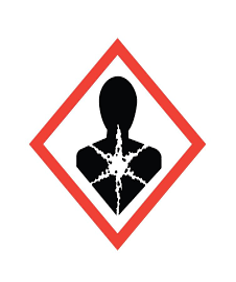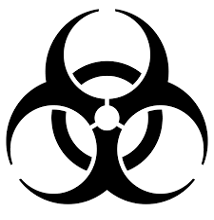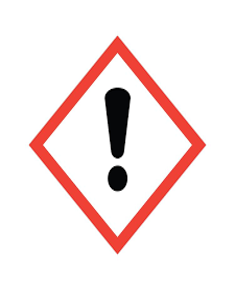At Circle of Care, the health, safety, and well-being of our employees is very important. We follow the WHMIS (Workplace Hazardous Materials Information System) rules to make sure all employees understand important health and safety information. To keep you safe, we provide regular training and information about possible dangerous materials.
What is WHMIS?
WHMIS (Workplace Hazardous Materials Information System) is Canada’s system for providing health and safety information on hazardous and dangerous products used in the workplace. It follows the global GHS (Globally Harmonized System) to make sure employees have access to important information about the chemicals they may come into contact with.
While handling dangerous/hazardous materials is rare at Circle of Care, it’s still important for you to be aware of them.
Overview of Healthcare Related Hazard Symbols

Health Hazard
This symbol means that the product can cause serious, long-term health problems, like cancer or breathing issues, which may not show right away. However, with safe handling and storage, such as using gloves and making sure there is good airflow, these products can be safely used. An example of a product that might have this symbol is a cleaning product.

Biohazards (Body Fluids)
This is the biohazard symbol, and it means body fluids like blood, sweat, urine, and saliva. Usually, you cannot tell which fluids are dangerous. Because of this, you should treat all body fluids as dangerous. When you are close to clients or providing personal care, you should always wear gloves and disinfect/clean the area to reduce any risks.

Exclamation Mark
The ‘!’ means that a product can cause minor health problems. These problems may include:
- Skin irritation (red, itchy, or sore skin)
- Eye irritation (red, watery, or sore eyes)
- Allergic reaction on the skin (rash or pain)
Products with this symbol, like hand sanitizer or cleaning products, can be used safely if you follow the safety rules:
- Keep the product in a safe place when you are not using it.
- Use the product carefully and avoid contact with your eyes and any skin that has cuts or sores.
- Wash your hands after using.
- Follow the instructions on the label.
Even though these products are less dangerous than others, it is always important to handle them safely.

Gas Cylinder
This is a gas symbol, used for gases stored under pressure, such as an oxygen tank.
These gases can be dangerous:
- They can explode when they are heated.
- They can cause frostbite (extreme cold injury).
Products with this symbol are safe if you follow the safety rules:
- Keep all gas-related items standing up and secured.
- Keep oil and grease away from them.
- Make sure the area has good airflow.
Your Responsibilities Under WHMIS
You have the responsibility to keep yourself and others safe. You should take steps to protect yourself and your clients from possible dangers.
Your Main Responsibilities Include:
- Using Personal Protective Equipment (PPE): Wear gloves, masks, or other safety gear when required.
- Report Dangers and Accidents: Tell your supervisor or HR about unsafe conditions, spills, or accidents with dangerous products.
- Follow safe work procedure: Complete all safety training and follow instructions for handling materials safely, and know what to do in an emergency.
- Keep work areas clean: Store dangerous products and materials safely. Clean up spills and keep the work area safe and clean.
- Read the label: Look for dangerous symbols, warning words, and safety instructions.
- Review Safety Data Sheets: Read through and understand the information within the Safety Data Sheets.
Please complete the following quiz to test your knowledge of WHMIS symbols and information.
